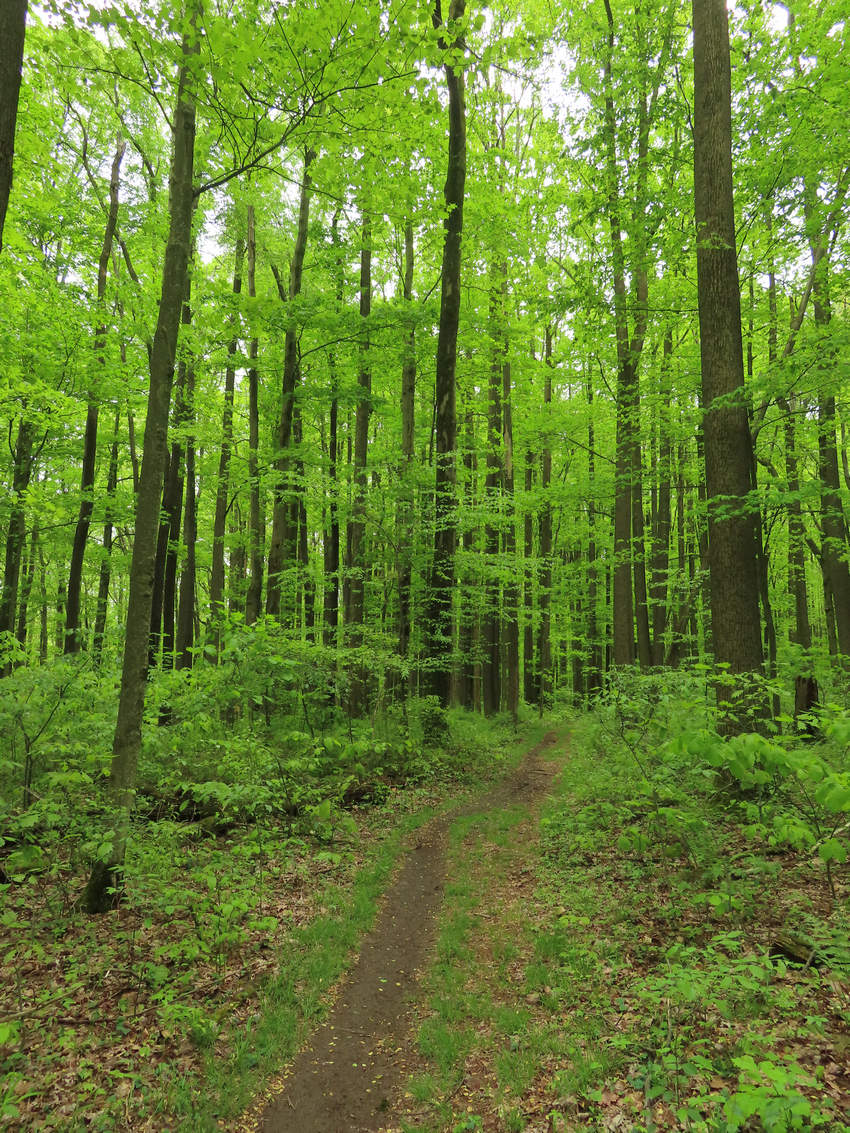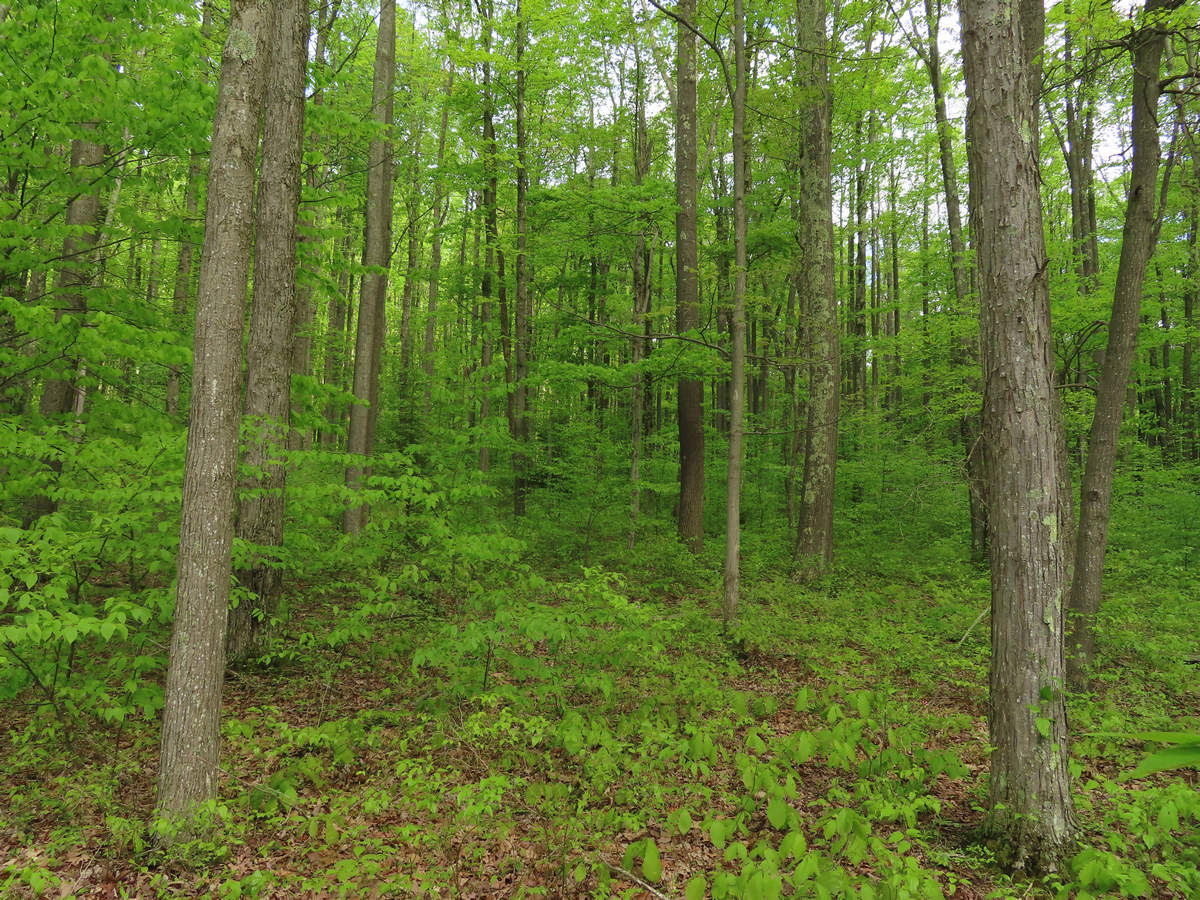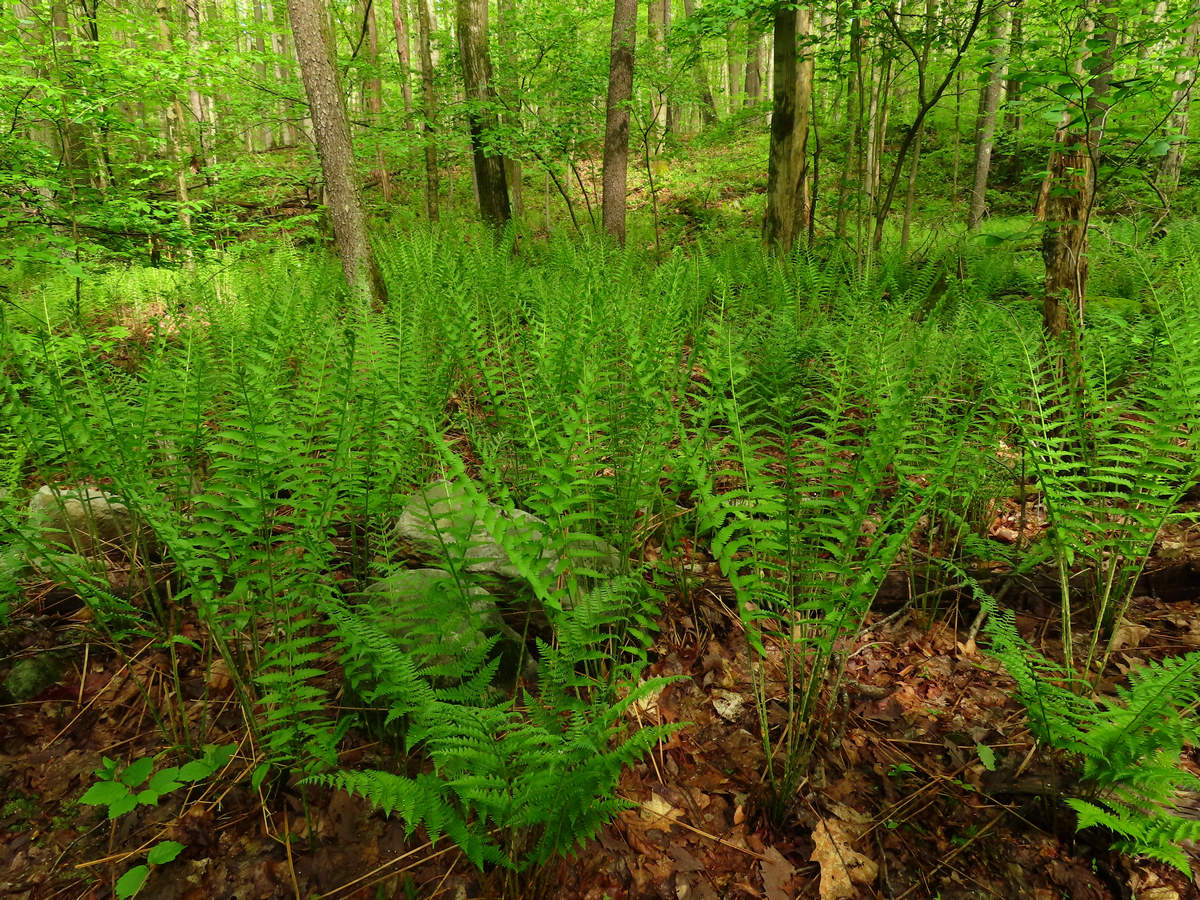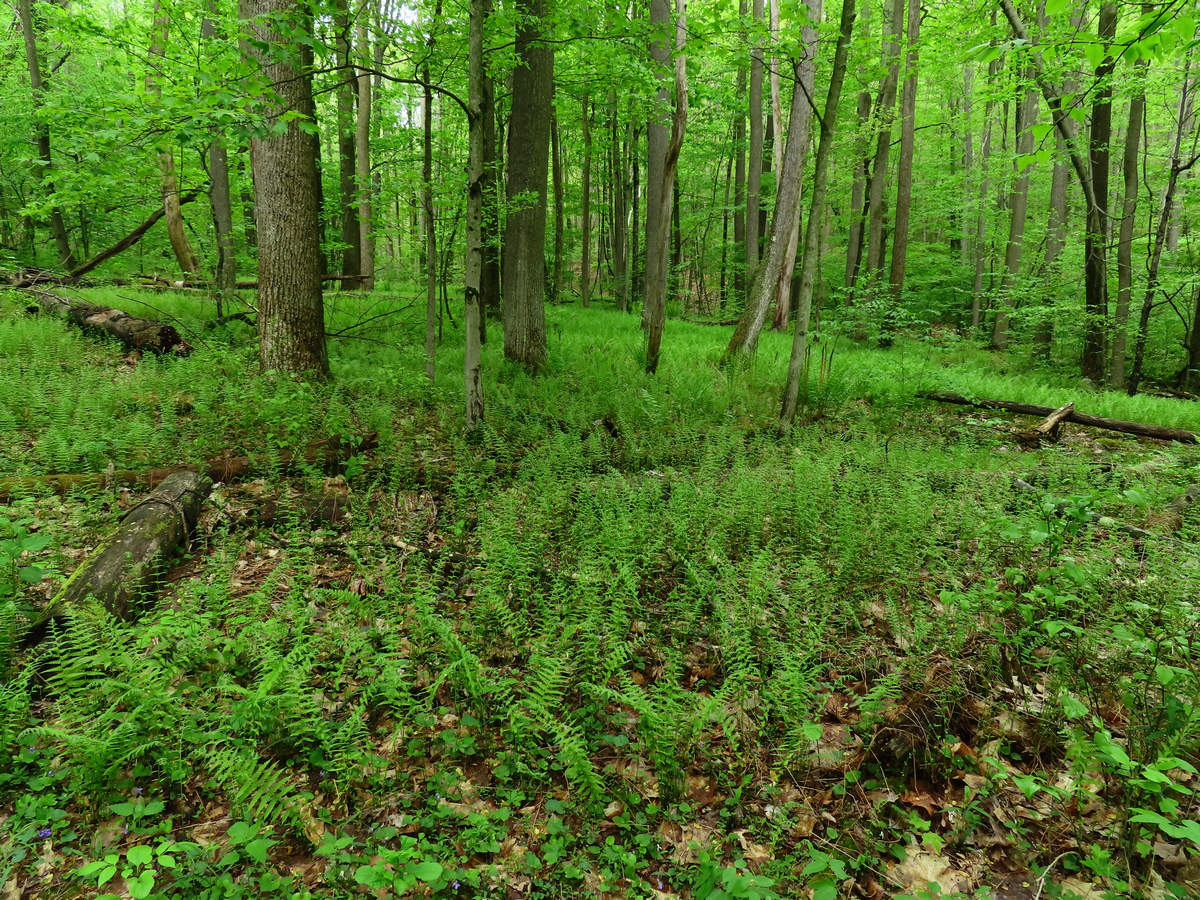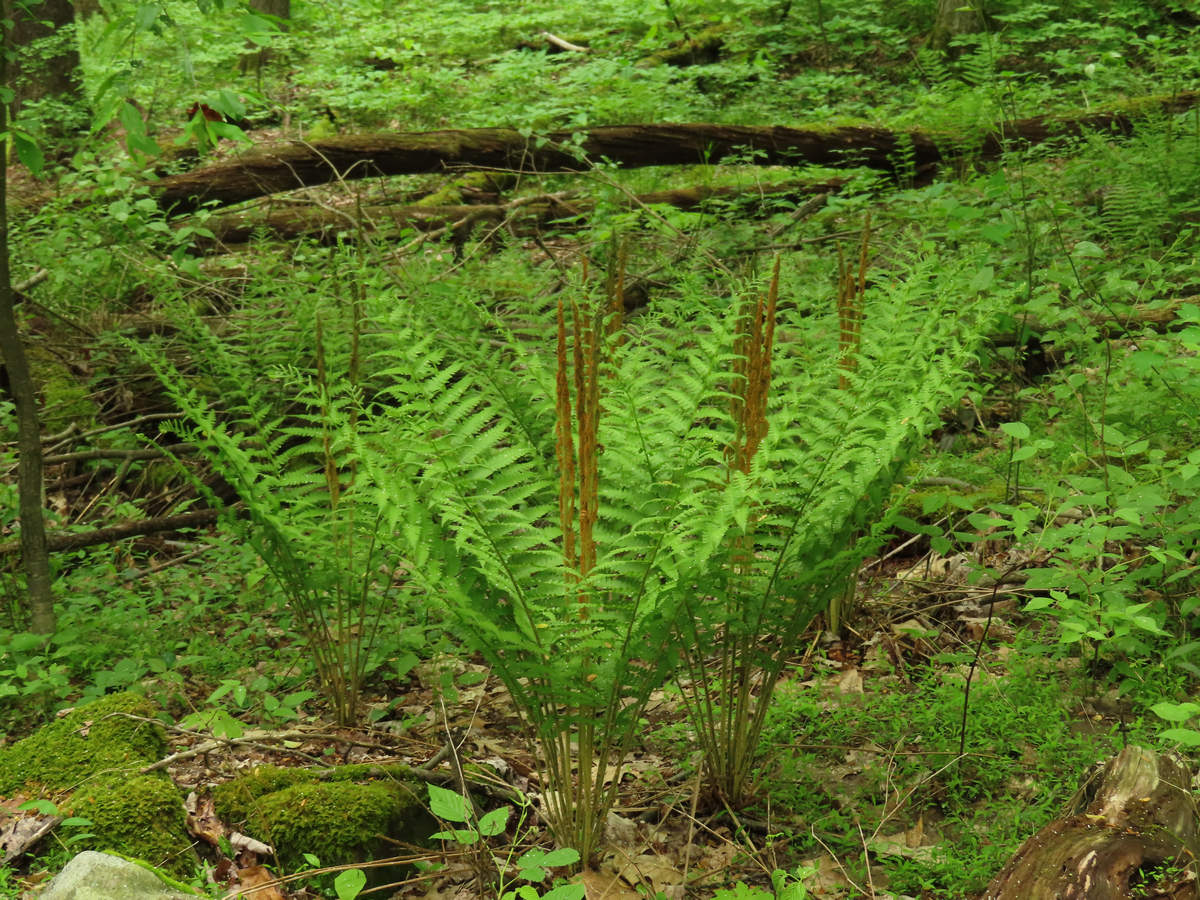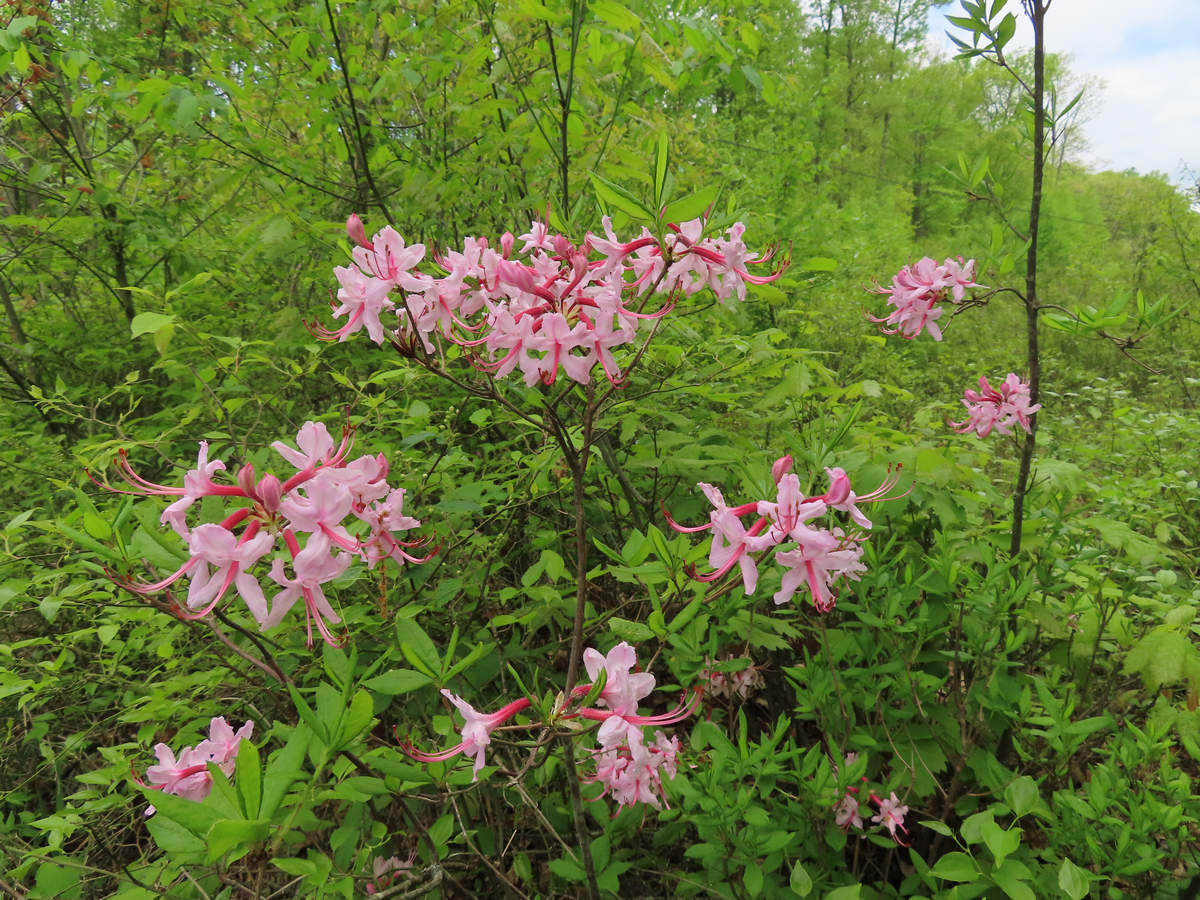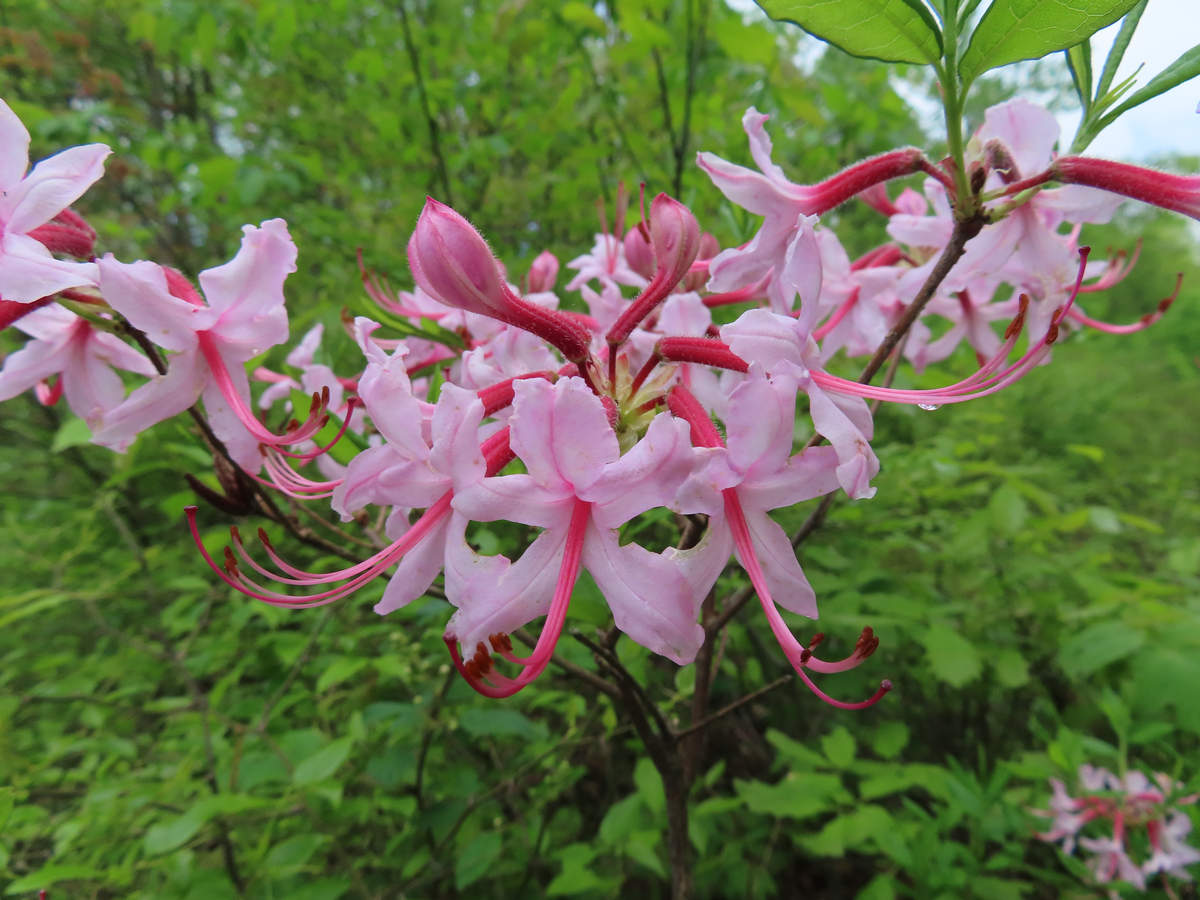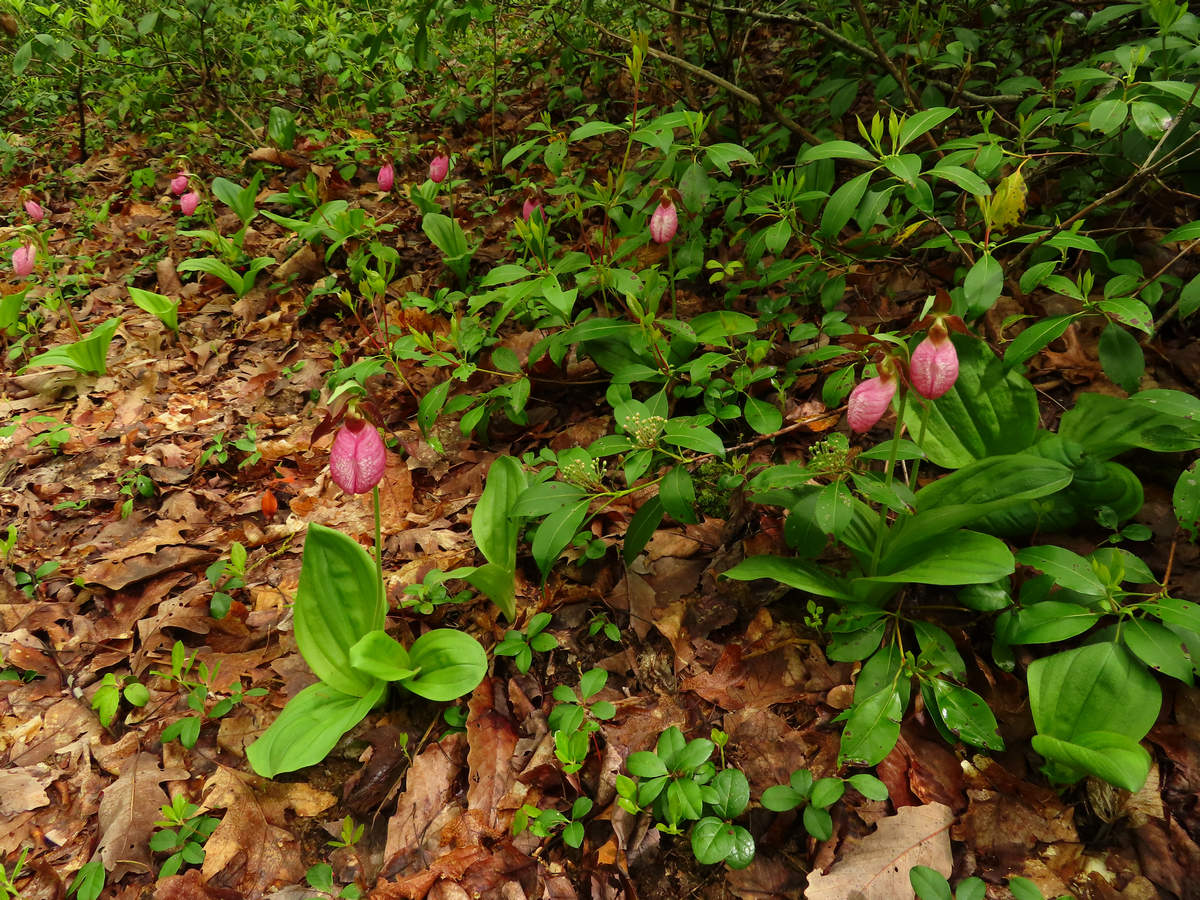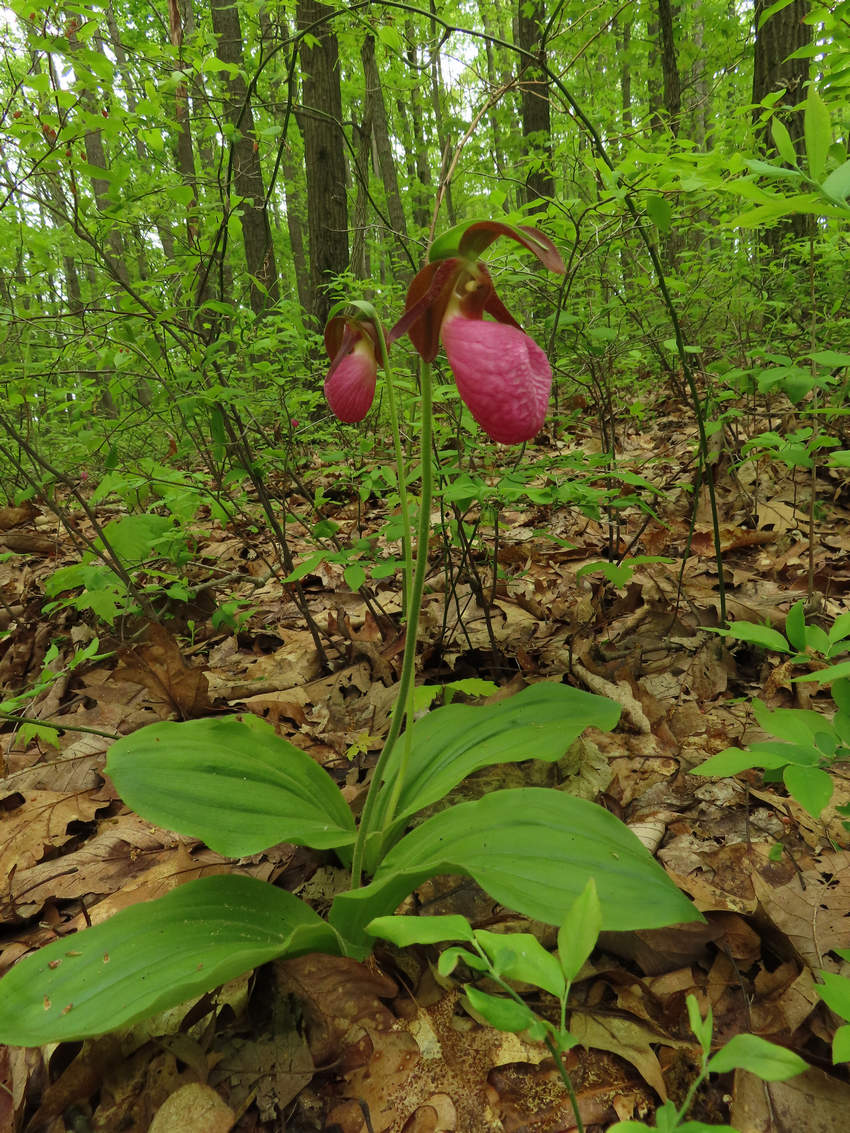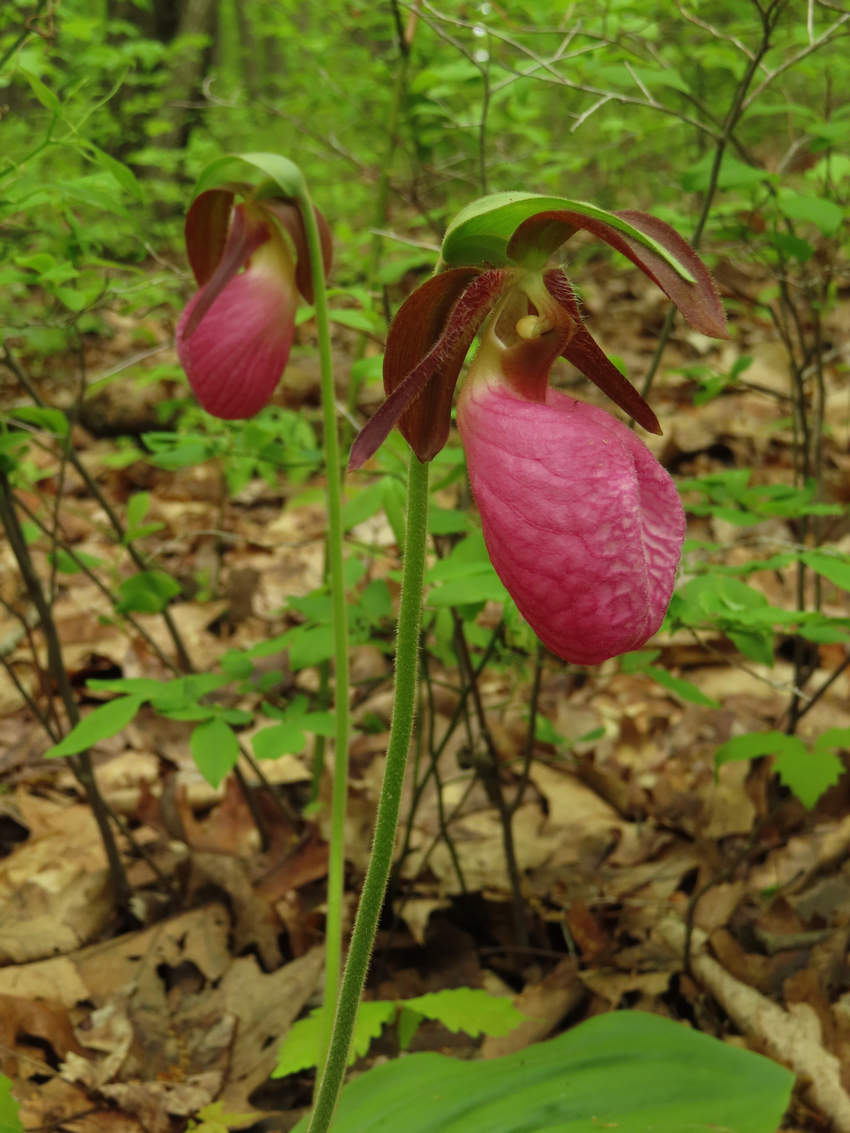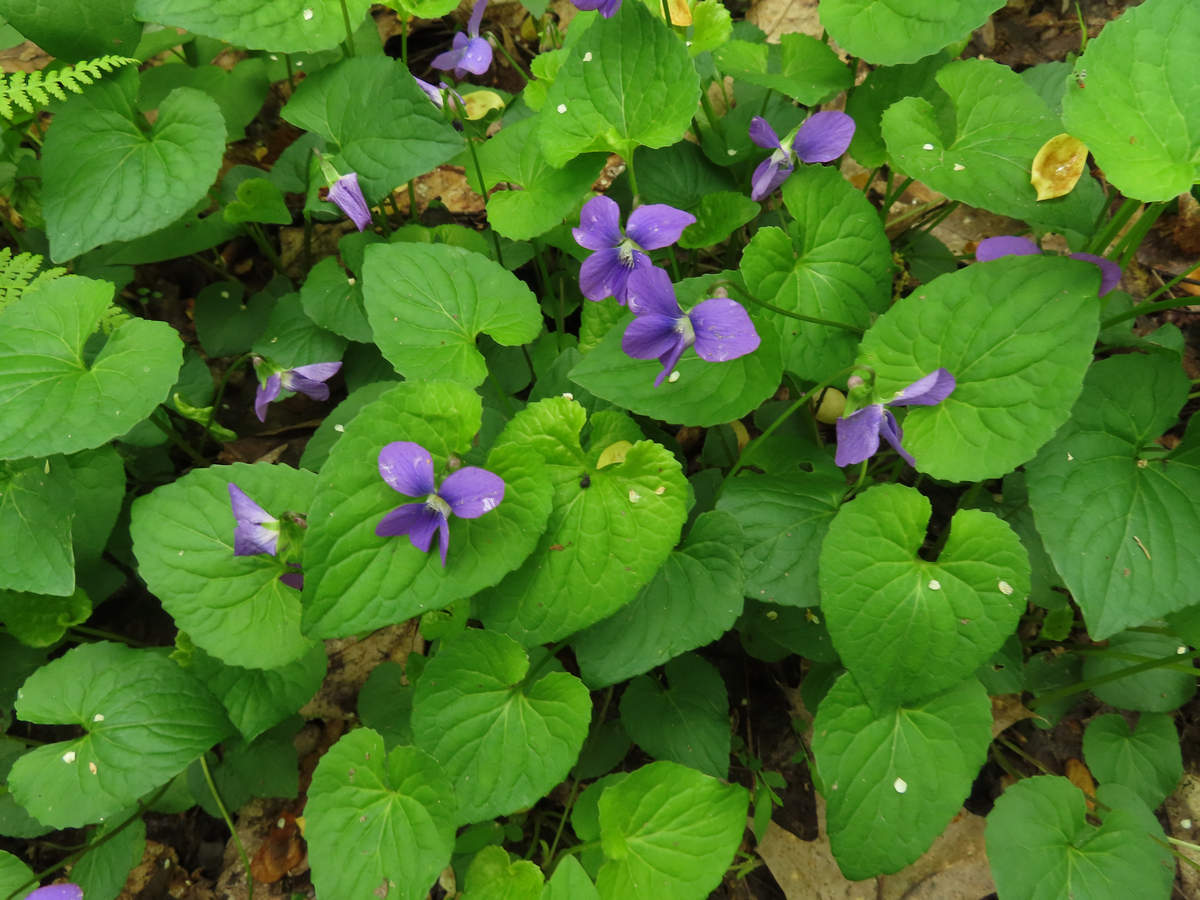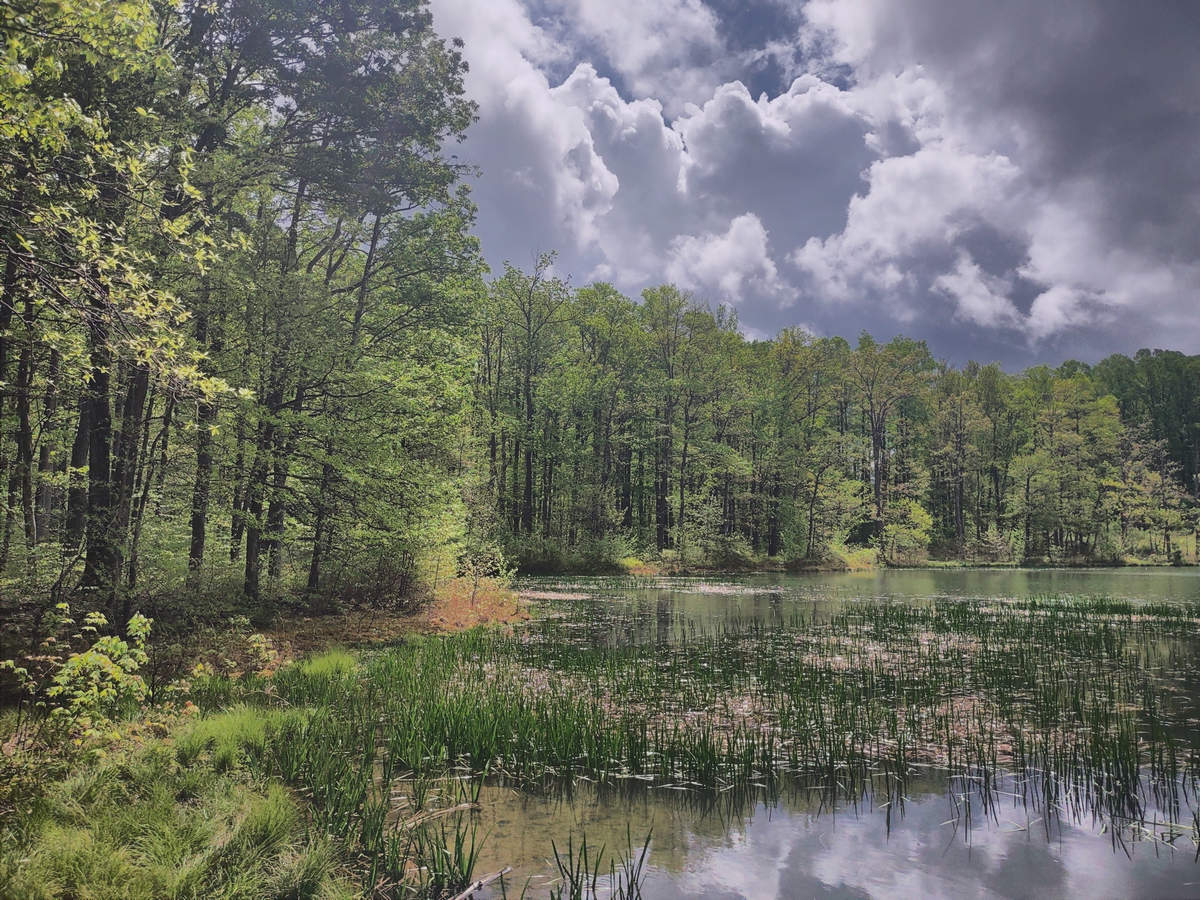Mike Breiding's Epic Road Trips: May 2024
Springtime in the West Virginia Mountains
Coopers Rock State Forest
Hiking the Scott Run Loop
7 May 2024 Coopers Rock State Forest
Hiking the Scott Run Loop
Betsy and I are fortunate to have several nearby state parks and a state forest and all of them have delightful hiking. The closest to us is Coopers Rock State Forest (CRSF), which is just a 20-minute drive for us. Hiking there is quite different from the nearby state parks. The reason? Elevation. Morgantown is 800', and CRSF is 2100'. This makes for a big difference in temperature, rainfall, and vegetation. When Morgantown looks and feels dry in the summer, CRSF can still be lush, green, and wet.
Of course, right now, in early May, just about everywhere is lush, green, and wet. But not everywhere is carpeted with ferns as far as the eyes can see, has towering trees, or is full of the music of the Hooded Warbler and Wood Thrush.
Our favorite hike is what we call the "Scott Run Loop," although the Scott Run Trail is just one of four trails that make up the loop. The hike starts downhill and makes its way to Scott Run, the trail's namesake. The water is always crystal clear and cool, and it is flanked by rhododendron and hemlock. Here it is cool, shady, and quiet, and we almost always have the trail to ourselves. Other than the merry sound of the run, the only other sounds are those of the birds. Heaven.
We had just started the hike, and Betsy wondered, "Will today be the day we hear the Hooded Warbler? As if on cue, the Hooded sang out its strong, strident call. The Hooded, along with the Wood thrush serenaded us for most of the hike.
Click on the photos below for a larger image.
The woods in spring has an ethereal quality and to my eyes there is no place more beautiful.
The ferns in this woods are so abundant and so beautiful each hike is like seeing them for the first time.
Here is the Cinnamon fern with its "Cinnamon sticks" which contain the spores. This fern can live to be 100 years old and it is one of the few that have changed little since the Age of the Ferns, the Carboniferous period over 300 million years ago.
Although the ferns are with us all summer this azalea is a spring time beauty.
The Roseshell azalea (Rhododendron prinophyllum) has a delightful fragrance reminiscent of cloves and cinnamon.
On the drive up to CRSF, Betsy and I were wondering if the beautiful Pink Lady's Slipper orchid(Cypripedium acaule) would be in bloom, and indeed it was.
Depending on the season, the flowers will last several weeks, slowly fading with each passing day.
The common blue violet (Viola sororia) is always a treat to see, whether in our yard or along a woodland trail.
When hiking the Scott Run loop, we always stop for a break here to watch the frogs jump, feed the swarm of bass that always arrive along the shoreline when we do, and just relax and take in the view.
It won't be long before we are back again and hearing the call of the Winter Wren and enjoying the flowers of the rhododendrons.
Although I consider Betsy and I casual birders, it is a big part of our lives. No matter where we go, we can enjoy the birds. Whether in remote woodlands or city parks, the low deserts or the high mountains, grasslands, or shorelines, they will be there.
How do we identify birds? We bird by ear, rarely by sight, as we are both rather clumsy with binoculars. Birding by ear can limit what birds we identify, but since most birds sing, we are able to do OK. With the exception of a Cowbird, all the birds on this hike were identified by song.
Recently, we started experimenting with the app "Merlin," which is able to identify bird songs using a phone. We have found it helpful in identifying songs we are not quite sure of and need a refresher to identify.
On this hike, I let Merlin run continuously, and out of the 29 species listed below, Merlin picked up 4 species that we did not.
One of the first birds Merlin picked up was the Tennessee warbler, a bird we are not familiar with. After Merlin picked it up, we decided to listen to the song on iBird Pro. After familiarizing ourselves with it, Betsy picked it up later, I did not. One bird Merlin missed was the Red-bellied woodpecker. Twice we heard the distinct "querring" call, but Merlin missed it both times.
So, is using Merlin to ID birds "cheating"? I would imagine that is a hot topic among birders world-wide. Personally, I think it will be quite helpful in jogging our memories on certain birds and helping us learn new ones.
1. Red-winged blackbird
2. Indigo bunting
3. Cardinal
4. Cowbird
5. Great crested flycatcher
6. Rose-breasted grosbeak
7. Baltimore Oriole
8. Oven bird
9. Wood pewee
10. Redstart
11. American robin
12. Scarlet tanager
13. Wood thrush
14. Titmouse
15. Towhee
16. Black-headed vireo
17. Warbling vireo
18. Yellow throated vireo
19. Red-eyed vireo
20. * Bay breasted warbler
21. * Black and white warbler
22. Black throated blue warbler
23. * Black throated green warbler
24. Hooded warbler
25. * Magnolia warbler
26. Tennessee warbler
27. Red-bellied woodpecker
28. Pileated woodpecker
29. Common yellow throat
The Wood thrush beckons.
Until next time...
Mike and Betsy
